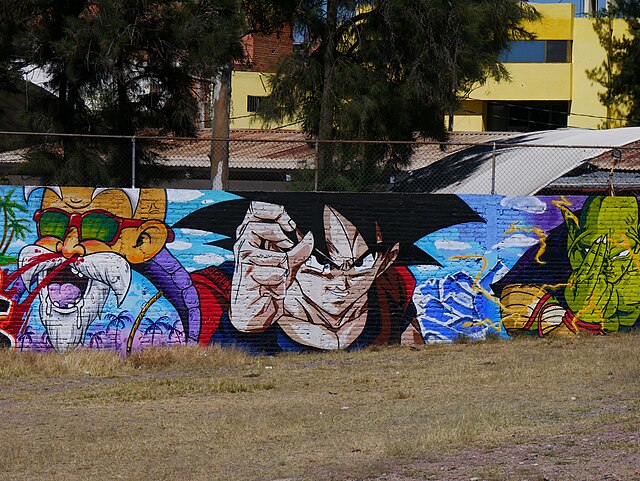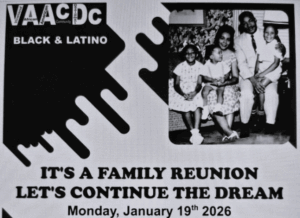Diverse Voices: Dragon Ball Creator Akira Toriyama Dies at 68

BY DANIEL WINNER | AC JosepH Media Correspondent
It comes with a lingering sense of shock and humility to announce that Japanese artist, author and character designer Akira Toriyama passed away last month on March 1, 2024.
The man was a legend and source of inspiration among artists and popular culture enthusiasts alike, having given the world such works as comic series Dr. Slump, role-playing game Dragon Quest and world-renowned comic and animated television metaseries Dragon Ball.
The announcement of Toriyama’s passing occurred at the same time as President Joe Biden’s State of the Union Address, surpassing trending topics on Twitter/X. Yoshimasa Hayashi, Chief Cabinet Secretary of Japan, said of the late artist that he played an “extremely important role in demonstrating Japan’s soft power.”
Toriyama’s work has led to the widespread recognition of Japan’s content around the world.” That soft power has translated well in the Americas, where the Dragon Ball franchise has dominated the entertainment market.
Toriyama’s first claim to fame was his 1979 work Dr. Slump. The manga comic series was a hit between 1980-1984. In 1981, Dr. Slump won the annual Shogakukan Manga Award for best shonen or shojo manga series of the year. Toriyama would later go on to create other serial comic series, including Pola & Roid, Mad Matic and the Chobit franchise.
In 1983, Toriyama published two short comic stories, The Adventures of Tongpoo and Dragon Boy, both of which would inspire his magnum opus, Dragon Ball.
During Dragon Ball’s serialization, Toriyama would go on to work as character designer of popular video game franchises in the 80s and 90s, including RPGs Dragon Quest and Chrono Trigger, as well as Playstation games Tobal No. 1 and Tobal 2.
Shueisha’s shonen manga magazine Weekly Shonen Jump published the Dragon Ball manga series from 1984 to 1995, with a total of 519 chapters. Loosely based on the 16th-century Chinese novel Journey to the West, the story of Dragon Ball follows the life and martial arts prowess of a boy named Son Goku, who travels the world meeting new companions in search of seven Dragon Balls, magical objects that summon the dragon Shenron who grants the user one wish.
The narrative’s development spans generations, following Goku and his friends and family as they mature and hone their fighting skills through battles with recurring villains in an effort to save the world from destruction.
Dragon Ball, along with successor titles such as Dragon Ball Z, Dragon Ball GT, and Dragon Ball Super, has been distributed internationally in the form of comic books, animated television series, films, video games, card games, action figures, and every other form of mass media entertainment. Akira Toriyama was even dubbed Chevalier or “Knight” of the Ordre des Arts et des Lettres by the French government in May 2019 for his contributions to the arts and popularization of Japanese comics in France.

Moreover, the Dragon Ball series is immensely popular among Blacks and Hispanics worldwide and remains a major contributing factor within popular culture enjoyed among these communities.
The Black and African American community has given the larger society a great deal of pop culture creators and enthusiasts. As a prominent group among the targeted demographic of Americans in the 80s and 90s, Japanese animated shows appealed to Black viewers in more ways than one.
The genre of television series released during this period was largely combat-oriented, featuring literary protagonists that could be described as underdogs. This character archetype appealed to the sentiments of young Blacks searching for identity and purpose since their ancestors were first brought to British America as slaves in 1619.
But another contributing factor to Dragon Ball’s popularity among Gen X Americans, including Black youth, had to do with access to television programs. While wealthier households in the 90s had easier access to cable television, everyone else had a limited selection of channels with their bunny-ear antennas.
Broadcast television channels like FOX and The WB provided the average consumer with newly released shows that would become game-changers for the entertainment industry, such as Pokémon, Sailor Moon and Dragon Ball Z.
One segment of said industry that was affected is the hop hop music scene. New York-born rapper Robert Fitzgerald Diggs (a.k.a. RZA) wrote in his book The Tao of Wu, that the Dragon Ball series “represents the journey of the black man,” pointing to the character of Goku and his efforts to define his own destiny. Other musicians who include references to the series include Chance the Rapper, Kendrick Lamar, The Weeknd, Childish Gambino and Grammy-winning singer Thundercat with his 2020 track “Dragonball Durag.”
Adobe engineer Malcom Jones said in an interview with Kotaku, that Dragon Ball Z could be compared to “hood classics” like Scarface, Set It Off and Blade.
“The thing that they all had in common is that the main character was always some sort of underdog,” he said. “Something about having an underdog that can, like, raise up and make something happen, I think Black men particularly identify themselves with that.”
Several Black-owned podcasts are now distributed all over the Internet focusing on issues in the anime industry and art community that impact Black fans worldwide. Some notable figures include Theo J. Ellis of Anime Motivation, Destiny Senpai of Getting Animated, and the collaborate Blxxk Anime Podcast, to name a few.
Japan has even opened its first and only Black-owned animation studio, D’ART Shtajio, owned by CEO and art director Arthell Isom, who also happens to be a native of Paterson, New Jersey.
Latin America is among the franchise’s largest markets. By the time the United States had released its first English dub (translation from the original Japanese) of the television series, Mexico had already gained a prominent following. The Spanish dub was released in 1996. The country ranked third among most Dragon Ball fans in the world. In 2018, Google Trends revealed the top 10 countries where Dragon Ball Super was most popular. All of them, except for the African island of Réunion, were from Latin America.
Part of the reason for this surge in popularity was the cost of production. Latin American markets caught on quickly that it would be easier to import entertainment and translate it into the relevant language rather than create their own content. In the 90s, TV stations throughout Latin America struggled to compete with foreign animation studios, primarily due to cost. Japanese media was far cheaper than American franchises at the time, and so time slots were filled with purchased foreign brands instead of homegrown shows. And so, series like Sailor Moon, Saint Seiya, and Dragon Ball Z became immensely popular in the Spanish-speaking world.

News of Toriyama’s death was met by the international community with lamentation and praise for the legacy he left behind. Hundreds of fans met at the Plaza de la Constitución in Mexico City and thousands gathered at the Obelisco of Buenos Aires, Argentina, to honor his memory. In Lima, Peru, over 40 artists collaborated to create a mural spanning six meters high and over 110 meters long, featuring paintings of Dragon Ball characters along with a black and white portrait of Toriyama.
Akira Toriyama’s death was caused by an acute subdural hematoma. A small, private funeral was held with family members, with tribute given by fellow creators Eiichiro Oda, of One Piece, and Masashi Kishimoto, of Naruto, among many others. He was 68 years old.
EDITOR’S NOTE: Daniel Winner has a double major in Religious Studies and Japanese from Penn State University and has traveled internationally to the Far East on several occasions. His insights on Buddhism and Asian culture give a unique view of historical and modern trends. He will be serving as a contributor for Front Runner New Jersey.
Follow Us Today On:
Note from AC JosepH Media: If you like this story and others posted on Front Runner New Jersey.com, lend us a hand so we can keep producing articles like these for New Jersey and the world to see. Click on SUPPORT FRNJ and make a contribution that will go directly in making more stories like this available. Thank you for reading!






